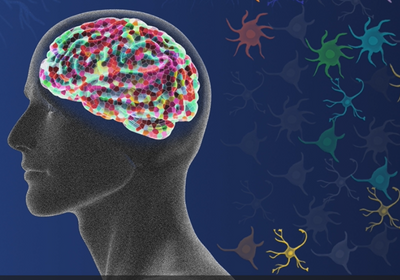ABOVE: Left to Right: Michael Greenberg, Erin Schuman, and Christine Holt, this year's Brain Prize awardees JOHN SOARES | MAX PLANCK INSTITUTE FOR BRAIN RESEARCH / G. LAURENT | UNIVERSITY OF CAMBRIDGE
Three scientists have collectively won The Brain Prize—the largest award for neuroscience—in recognition of their contributions to the science of brain plasticity.
Neuroscientists Christine Holt, Michael Greenberg, and Erin Schuman will share the 10 million DKK award (roughly €1.3 million or US $1.45 million), which is considered the world’s most prestigious in neuroscience. The prize is presented annually by Denmark's Lundbeck Foundation in recognition of highly significant and influential advances in brain research. The award ceremony will take place in Copenhagen later this year.
Richard Morris, a neuroscientist at the University of Edinburgh and the chair of The Brain Prize selection committee, tells The Scientist that the recipients’ research has had a “tremendous scientific impact.”
The Brain Prize recognizes the three scientists’ research on the molecular mechanisms behind neural plasticity: the brain’s ability to rewire connections as it learns, develops, heals from injury, and adapts to new information.
See “Silent Synapses May Provide Plasticity in Adulthood”
The three scientists each study different aspects of protein production in neurons in the context of synaptic plasticity. In his early work, Greenberg, a neuroscientist at Harvard Medical School, identified the cFos gene and its associated protein, a transcription factor known as Fos. He went on to show that neuronal activity drives Fos expression, kickstarting the production of synaptic plasticity-related genes and leading to long-term changes in connectivity. Fos acts on extremely fast timescales, shifting the paradigm that gene regulation is a slow process. Throughout his career, he and his group have continued studying how sensory-dependent activity sculpts the brain’s wiring, describing a host of other regulatory elements that coordinate long-term synaptic changes important in memory formation, behavior, and development.
Greenberg established that Fos and other genes mediate long-term synaptic plasticity, but scientists continued to puzzle over how synaptic plasticity is maintained at individual synapses far from the nucleus. This puzzle intrigued Schuman, who is now the director of the Max Planck Institute in Germany. In 1996, Schuman was the first to show that local protein translation at these far-away synapses is crucial for strengthening synaptic connectivity, a phenomenon that occurs without any genetic changes at the nucleus—where mRNAs are first transcribed. “The solution that neurons have come up with is to send mRNAs” from the nucleus to the axons, Schuman explains in a press briefing ahead of the announcement, “once the mRNAs are in the processes, proteins can be made on demand.” Since then, she’s continued to study how local protein expression and degradation influence synaptic plasticity, work that is relevant for diseases such as Fragile X Syndrome and Tuberous Sclerosis.
Holt, a neuroscientist at the University of Cambridge in the UK, is interested in how connections are first formed in the brain during development and maintained long-term. Her work on the vertebrate visual system led to the discovery that as neurons navigate to their targets during development, proteins are made and degraded at the very tip of the axon, called the growth cone. Like Schuman’s findings, Holt’s research highlighted the importance of local translation both in the development and maintenance of axons in the brain.
Morris says that together, the researchers’ work tells “a lovely story.” First, Greenberg’s work shows that neuronal “activity can affect gene transcription.” Then, Schuman and Holt show that “gene transcription creates RNAs which are transported out to the periphery to do their job” of modifying synapses.
See “The Noncoding Regulators of the Brain”
Although the research is fundamental basic science, all three researchers’ work has led to a better understanding of the genetic basis of various neurodevelopmental and neurodegenerative disorders. “One of the surprises really over the last few years has been the linking of neurodegenerative types of diseases to messenger RNA,” says Holt. Fragile X syndrome and Alzheimer’s have both been linked to disturbances in mRNA translation at the synapse, she says.
“What’s come out of the work is something that is going to have many [translational] ramifications,” says Morris, “We’re already beginning to see some of them, but there will be further examples in the years ahead.”






